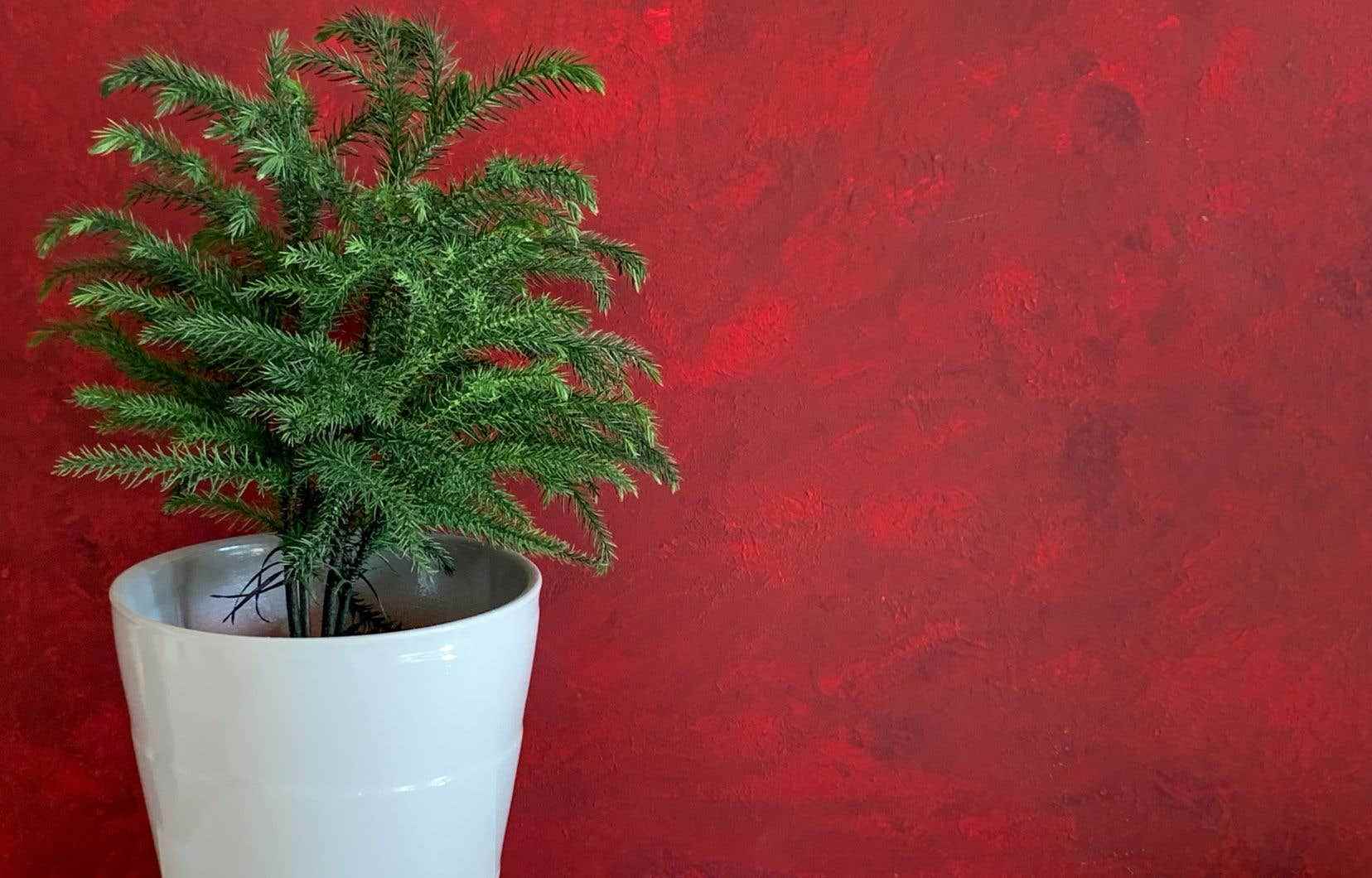This text is part of the special book Plaisirs
Whether it’s decorating the table, drawing the eye to the mantel or adding an aromatic touch to a room, the mini tree has everything it takes to spread magic inside the house during the holidays. .
In garden centres, there are several types of Christmas plants, including potted mini trees. These are grouped here into three categories: hardy conifers, tropical conifers and herbs. All three have the common denominators of being natural, attractive and compact… a good substitute for the traditional fir tree.
hardy evergreens
dwarf Alberta spruce
Picea glauca ‘conica’
The dwarf Alberta spruce is a conifer with a compact habit and very slow growth. It therefore does not need to be pruned to keep its pretty shape. In addition to diffusing a good smell of fir trees, it has the advantage of being able to integrate into one of your flowerbeds in the spring in order to continue the rest of its life to decorate your garden. Know that it can very well live in a pot outside all year round too. As it is rustic, it will prefer a cool location, away from heat sources. It can be placed near the front door to welcome guests, provided that it can benefit from good light. You will water it as soon as the soil is dry to the touch. It is important not to flood the plant, as the roots will rot.
Canadian cedar
Thuja occidentalis
Pot-grown Canadian cedar can be kept outdoors year-round. It can also be used very well as a Christmas tree. In order for it to maintain a traditional shape, it will be necessary to prune it slightly in the spring. To decorate it, it is preferable that you use LED lights, which will not give off heat, so as not to damage its beautiful foliage. Moreover, this type of bulbs is recommended for all living plants.
Its maintenance is very similar to spruce if kept indoors. When it’s time to take it out, remember to acclimatize it to the sun and the temperature beforehand. However, if you decide to grow it in a pot outdoors throughout the year, it will be important to water it well in the fall so that it can store water reserves to spend the winter without get too dehydrated.
Chinese juniper
Juniperus chinensis
This conifer is mainly used as a bonsai. Easy to prune and slow growing, it is an excellent candidate as a mini tree. Overwintering it indoors is not recommended, as it does not tolerate dry house air. Plus, watering it is a real challenge. Like all other hardy bonsai trees, it will need to be overwintered outdoors or in a sheltered (but unheated) location late in the fall.
Tropical conifers (not hardy)
norfolk pine
Araucaria heterophylla
This conifer is considered to be the perfect Christmas tree for decorating small spaces! After the holidays, you’ll treat it like any other houseplant and give it the proper maintenance. It tolerates heat during the summer months, but, like all conifers, it prefers a cool place, away from heat sources in winter. The potting soil should be moist, but never waterlogged. Spraying the plant when the surrounding air is dry can also be beneficial. Norfolk pine is a great choice for lazy gardeners because it doesn’t need pruning.
Lambert’s Cypress
Cupressus macrocarpa ‘Gold Crest’
Very attractive, this lime green conifer is famous for its lemony smell when its leaves are crumpled. It can be kept all year round as a houseplant, provided it is offered enough humidity. A few sprays of water on its foliage will greatly benefit it, especially in winter when the surrounding air is rather dry. Exposing it to bright light without direct sunlight will allow it to maintain its beautiful coloration. By pruning it lightly in the spring, you will keep its compact shape. Keep its soil moist, but not soggy.
Herbs
Lavender
Lavandula angustifolia
Lavender sold in garden centers during the holiday season is pruned to look like a Christmas tree. Its smell and its foliage make it a star. More difficult to keep than conifers, it needs direct sunlight and extra lighting to make up for the lack of light in our winters. It will be important to let its soil dry out thoroughly between waterings, otherwise you run the risk of seeing it wither. In addition, it is imperative to transplant it into the open ground in the garden in the spring. Not very hardy at our latitude, unless it is well protected, it requires soil protection or a good snow cover to survive during the cold season.
Rosemary
Rosmarinus officinalis
Rosemary can be kept for several years if you maintain it properly. Presented as a Christmas plant in garden centres, it is then pruned in the shape of a fir tree. Its consumption is not recommended in the weeks following its purchase, since it is generally impossible to know how it has been treated. Another option: you can also use rosemary from your vegetable garden by bringing it indoors in the fall. While doing so, it will be important to give it plenty of sun and keep it in a cooler room. It tolerates pruning very well. That said, its effect will be as pretty with its natural port as it is cut in the shape of a conifer. Water the soil when it starts to dry out. Rosemary is not hardy with us.
These seven mini trees are all good avenues to explore. The ideal is to find the plant that best suits your needs, your tastes and your interior.
This special content was produced by the Special Publications team of the To have to, pertaining to marketing. The drafting of To have to did not take part.
